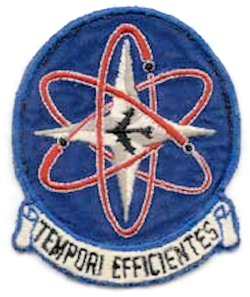| 428th Electromagnetic Warfare Flight (formerly 428th Bombardment Squadron) | |
|---|---|
 B-47 Stratojet as flown by the squadron 1958-1962 | |
| Active | 1942-1945; 1959-1962 |
| Country | |
| Branch | |
| Role | Medium Bomber |
| Motto(s) | Tempori Efficientes (Latin for 'On Time and Effective') |
| Engagements | Mediterranean Theater of Operations [1] |
| Decorations | Distinguished Unit Citation [1] |
| Insignia | |
| Patch with 428th Bombardment Squadron emblem [a] [1] |  |
| Patch with 428th Bombardment Squadron World War II emblem [2] |  |
| World War II tail stripe [2] | Top Yellow, bottom third red |
The 428th Electromagnetic Warfare Flight is an active Air Force Reserve Command unit, stationed at Peterson Space Force Base, Colorado. It is a reserve associate squadron of the 4th Electromagnetic Warfare Squadron of the United States Space Force.
Contents
- Mission
- History
- World War II
- Strategic Air Command
- Space operations
- Lineage
- Assignments
- Stations
- Aircraft
- Awards and campaigns
- References
- Notes
- Bibliography
The squadron was first active during World War II as the 39th Reconnaissance Squadron, becoming a medium bomber as the 428th Bombardment Squadron a month after it was activated. After training in the United States, it deployed to the Mediterranean Theater of Operations, where it participated in Operation Torch, the invasion of North Africa. It moved forward with American ground forces. The squadron was awarded a two Distinguished Unit Citations for its actions in combat. Following V-E Day, the squadron was inactivated in theater.
The squadron was assigned to the 310th Bombardment Wing at Schilling Air Force Base, Kansas, where it was active from February 1959 to 1 January 1962. It was inactivated when Strategic Air Command's alert commitments changed.


